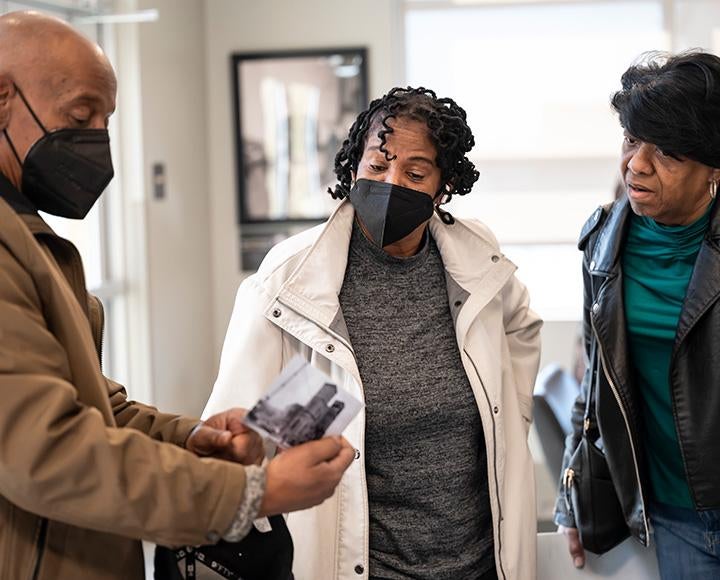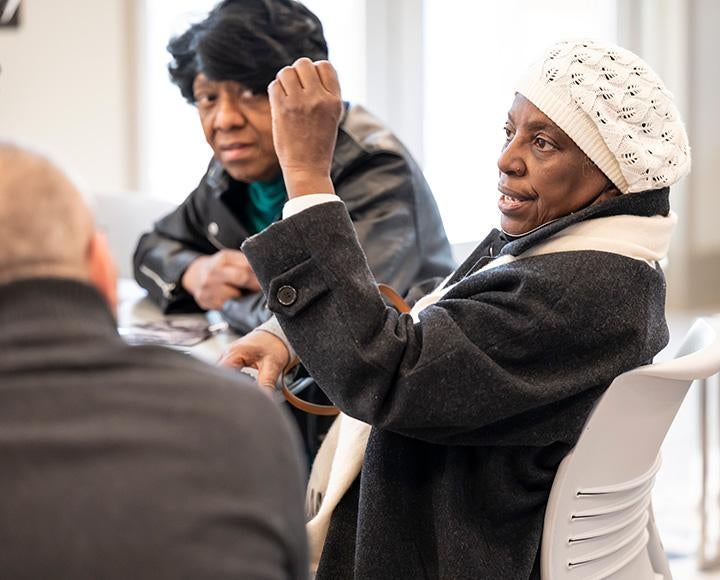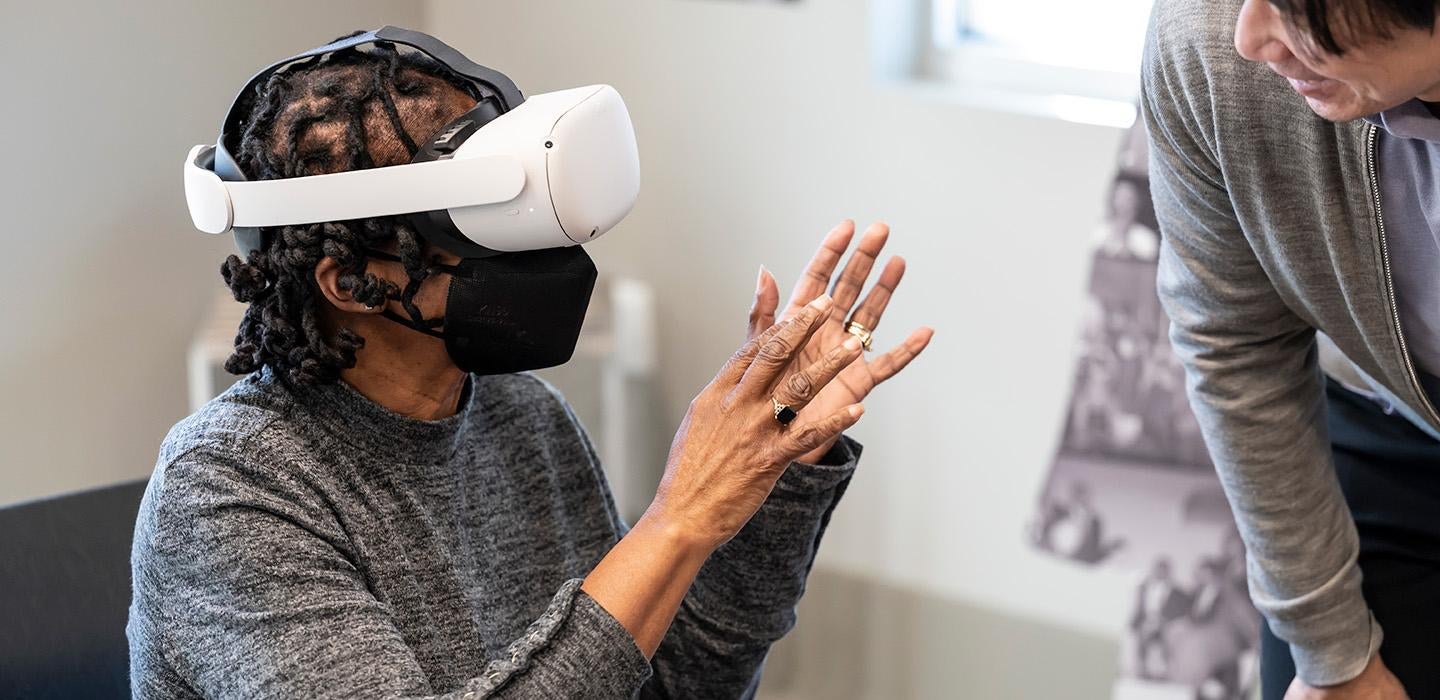
Subscribe to Pittwire Today
Get the most interesting and important stories from the University of Pittsburgh.It’s called virtual reality, but it's being used to give older adult residents of the Hill District access to very real memories.
In the fall, Tim Huang, an assistant professor in the University of Pittsburgh School of Computing and Information, launched the Time Traveling Project, a community-based initiative that uses immersive visual technology to add historical context to the photography of Charles “Teenie” Harris, a prolific chronicler of 20th-century Black life.
To do this, Huang converts Harris’ photos of the Hill District into short videos viewable in virtual reality headsets and, to give context to those images from decades past, records and layers in oral histories from people alive during the era when the images were taken.
“I want my work to help underserved populations gain representation. The story of the Hill District and the people who live there is absent from mainstream media. We are recreating the experience of what it was once like to live there and documenting people’s stories,” he said.
The Time Traveling Project is a partnership among the University, the Charles “Teenie” Harris Archive at the Carnegie Museum of Art and the Macedonia Family and Community Enrichment Center, a Hill District faith-based, nonprofit community outreach organization.
Huang and his research cohort — Clinical Associate Professor Dmitriy Babichenko and PhD candidate Pat Healy (A&S ’19, SCI ’19), also in the School of Computing and Information — meet weekly with participants in the Enrichment Center's senior programming, who view Harris’ photos and virtual reality videos and share recollections.
For Liz Hyatt, who grew up in the Hill District, seeing photos of her former middle school, Herron Hill, reminded her of a time when the neighborhood felt more vibrant.
“Everything was happy; we didn’t have much, but we had a ball. We had an imaginary mind back then. We made our own skateboards by attaching the bottoms of roller skates to boards, and we went sledding using garbage can lids,” she told Pittwire.


The goals of the Time Traveling Project are two-fold, said Huang: to create a time capsule for younger generations to understand the historical significance of the Hill District and Harris’ work and to engender a sense of belonging for participants.
“We aim to understand the role of collective nostalgia in enhancing social connectedness and fostering a sense of community at a broader level,” he said.
Healy, who is making the Time Traveling Project the centerpiece of their dissertation, hopes it will bridge the generational divide.
“We’re learning that there are gaps in understanding between what’s captured in Harris’ photos and many people’s preexisting opinions of the Hill District,” they said.
There are many reasons the neighborhood, a once thriving epicenter of Black life in Pittsburgh, experienced an economic downturn — notably the building of the Civic Arena venue in 1958, which displaced an estimated 8,000 residents and 400 businesses, according to an article by DaNia Childress, associate curator for African American history at the Heinz History Center. Though the Hill District is undergoing revitalization efforts and recently gained a grocery store, the downturn can still be seen in shuttered storefronts and empty lots.
Terri Baltimore, program coordinator for the Macedonia Family and Community Enrichment Center’s Active for Life Senior Center, also sees the potential of the Time Traveling Project to enhance the Hill District’s reputation, noting that “immigrants, in addition to African Americans, lived in the neighborhood, and their imprint is in the landscape, in the buildings and the street names.”
“My hope for people learning about the stories collected in the Time Traveling Project is that folks who never come into the Hill District see their family roots here and see humanity here. They will cease to look at this place as [having] a red circle around it that they didn’t want to penetrate,” Baltimore said. “The neighborhood holds the DNA of Pittsburgh.”
— Nichole Faina, photography by Aimee Obidzinski. In the top photo, Professor Tim Huang demonstrates how to use a virtual reality headset with Liz Hyatt at the Teenie Harris Center in the Hill District.


